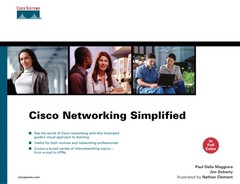Robert Metcalfe developed Ethernet at the famous Xerox Palo Alto Research Center (PARC) in 1972. The folks at Xerox PARC had developed a personal workstation with a graphical–user interface and needed a technology to network these workstations with their newly developed laser printers. (Remember, the first PC, the MITS altair, was not introduced to the public until 1975.)
Metcalfe originally called the network Alto Aloha Network but changed the name in 1973 to Ethernet to make it clear that any type of device could connect to his network. He chose the name “ether” because the network carried bits to every workstation in the same manner that scientists once thought waves were propagated through space by the “luminiferous ether.” Robert’s first external publication concerning Ethernet was available to the public in 1976.
Metcalfe left Xerox, and in 1979, he got Digital Equipment Corporation (DEC), Intel, and Xerox to agree on a common Ethernet standard called DIX. In 1982, the Institute of Electrical and Electronic Engineers (IEEE) adopted a standard based on Metcalfe’s Ethernet.
Ethernet took off in academic networks and some corporate networks: it was cheap, and public domain protocols such as Internet Protocol (IP) ran natively. However, one major company wanted the world to adopt its protocol instead. That company was IBM, and its protocol was called Token Ring.
Before switching was introduced, Ethernet was more difficult to troubleshoot than Token Ring because Ethernet devices occupied the same cable or hub. Although Ethernet was less expensive to implement, larger corporations chose Token Ring because of their relationship with IBM and the ability to more easily troubleshoot problems.
The battle for the LAN continued for more than ten years, until eventually Ethernet became the predominant technology. Arguably, it was the widespread adoption of Ethernet switching that drove the final nail in Token Ring’s coffin.
Other LAN technologies have been and continue to be introduced, but Ethernet prevails as the predominate technology for local high–speed connectivity.
Ethernet describes a system that links the computers in a building. It consists of hardware (a network interface card), software, and cabling used to connect the computers together. All computers on an Ethernet are attached to the same cable, as opposed to the traditional point–to–point networks in which a single device connects to another single device.
Because all computers share the same cable on an Ethernet network, the network needs a protocol to handle contention if multiple computers want to transmit data at the same time. (Only one can talk at a time.) Metcalfe’s invention introduced the carrier sense multiple access collision detect (CSMA/CD) protocol. CSMA/CD defines how a computer should listen to the network before transmitting. If the network is quiet, the computer can transmit its data.
However, a problem arises if more than one computer listens, hears silence, and transmits at the same time: the data collides. The collision–detect part of CSMA/CD defines a method for transmitting computers to back off when collisions occur and randomly attempts to restart transmission.
Ethernet originally operated at 3 Mbps, but today operates at speeds ranging from 10 Mbps to 10 Gbps.
When Metcalfe originally developed Ethernet, computers were connected to a single copper cable. The physical limitations of a piece of copper cable carrying electrical signals restricts the distance computers could be from each other on an Ethernet. Repeaters help alleviate the distance limitations. Repeaters are small devices that regnerate an electrical signal at the original signal strength. This process allows an Ethernet to extend across an office floor that might exceed the Ethernet distance limitations.
The addition or removal of a device to the Ethernet cable disrupts the network for all other connected devices. A device called an Ethernet hub solves this problem. First, each port on a hub is actually a repeater. Secondly, hubs let computers insert or remove themselves nondisruptively from the network. Finally, hubs simplify Ethernet troubleshooting and administration.
As networks grow larger, companies need to fit more and more computers onto an Ethernet. As the number of computers increased, the number of collisions on the network increases. As collisions increase, network traffic decreases. Networks come to a grinding halt when too many collisions occur.
Ethernet bridges resolve this problem by physically breaking an Ethernet into two or segments. This arrangement means that devices on one side of the bridge do not collide with devices on the other side of the bridge. Bridges evolved so that they learn which devices were on each side and only transfer traffic to the network containing the destination device. A two–port bridge also doubles the bandwidth previously available because each port is a separate Ethernet.
Ethernet bridges evolved to solve the problem of connecting Ethernet networks to Token Ring networks. This process of translating a packet from one LAN technology to another is called translational bridging. Translational bridging facilitates the migration of Token Ring networks to Ethernet.
As Ethernet networks continue to grow in a corporation, they become more complex, connecting hundreds and thousands of devices. Ethernet switches allow network administrators to dynamically break their networks into multiple Ethernet segments.
Initially, switches operated as multiport Ethernet bridges. But eventually, as the cost per port decreased significantly, Ethernet switches replaced hubs, in which each connected device receives its own dedicated Ethernet bandwidth.
Collisions are no longer an issue because connections between computer and switch can be point–to–point, and the Ethernet can both send and receive traffic at the same time. This ability to send and receive simultaneously is called full duplex, as opposed to traditional Ethernet, which operated at half duplex. Half duplex means a device can receive or transmit traffic on the network, but not at the same time. If both happen at the same time, a collision occurs.







